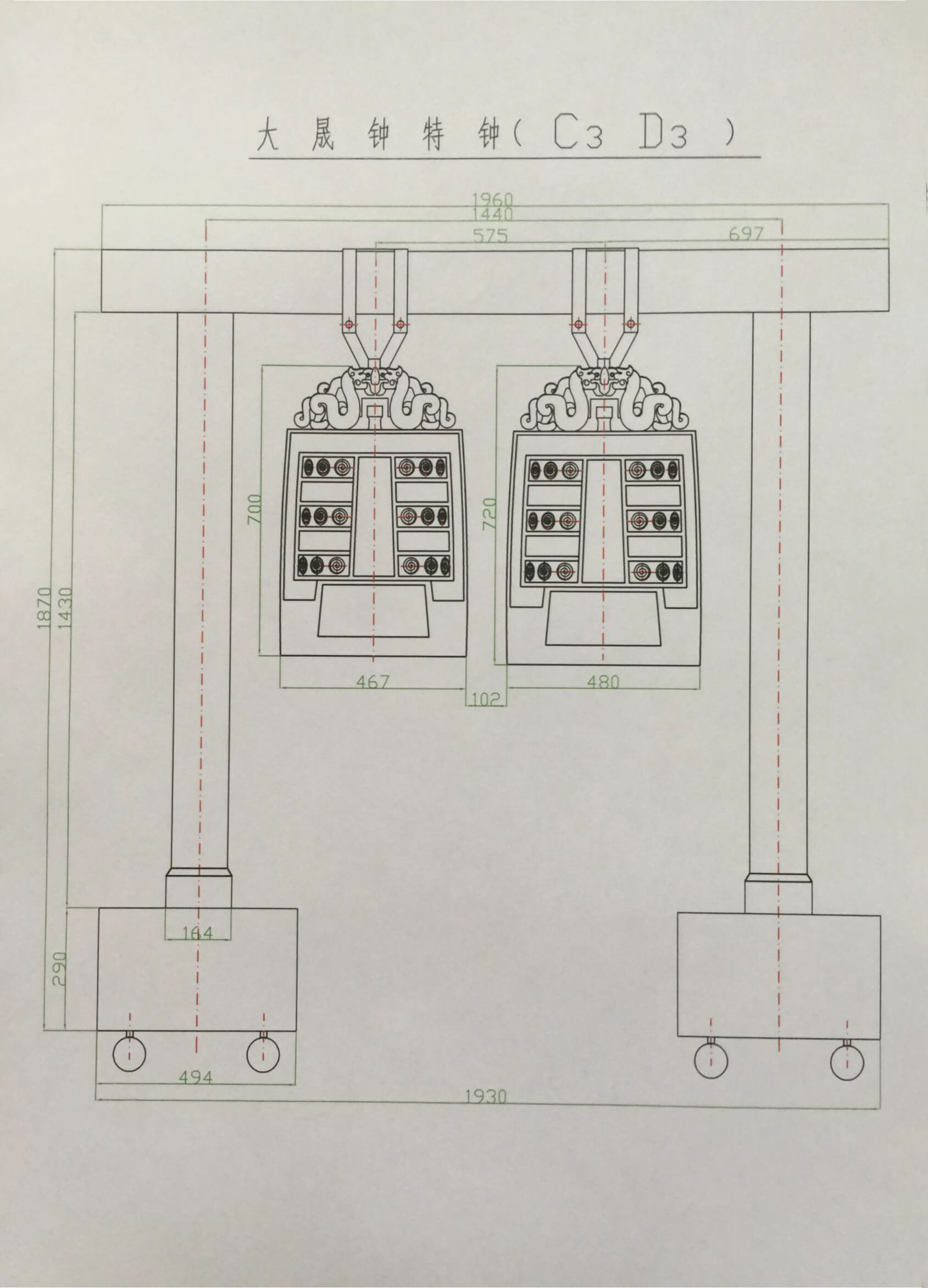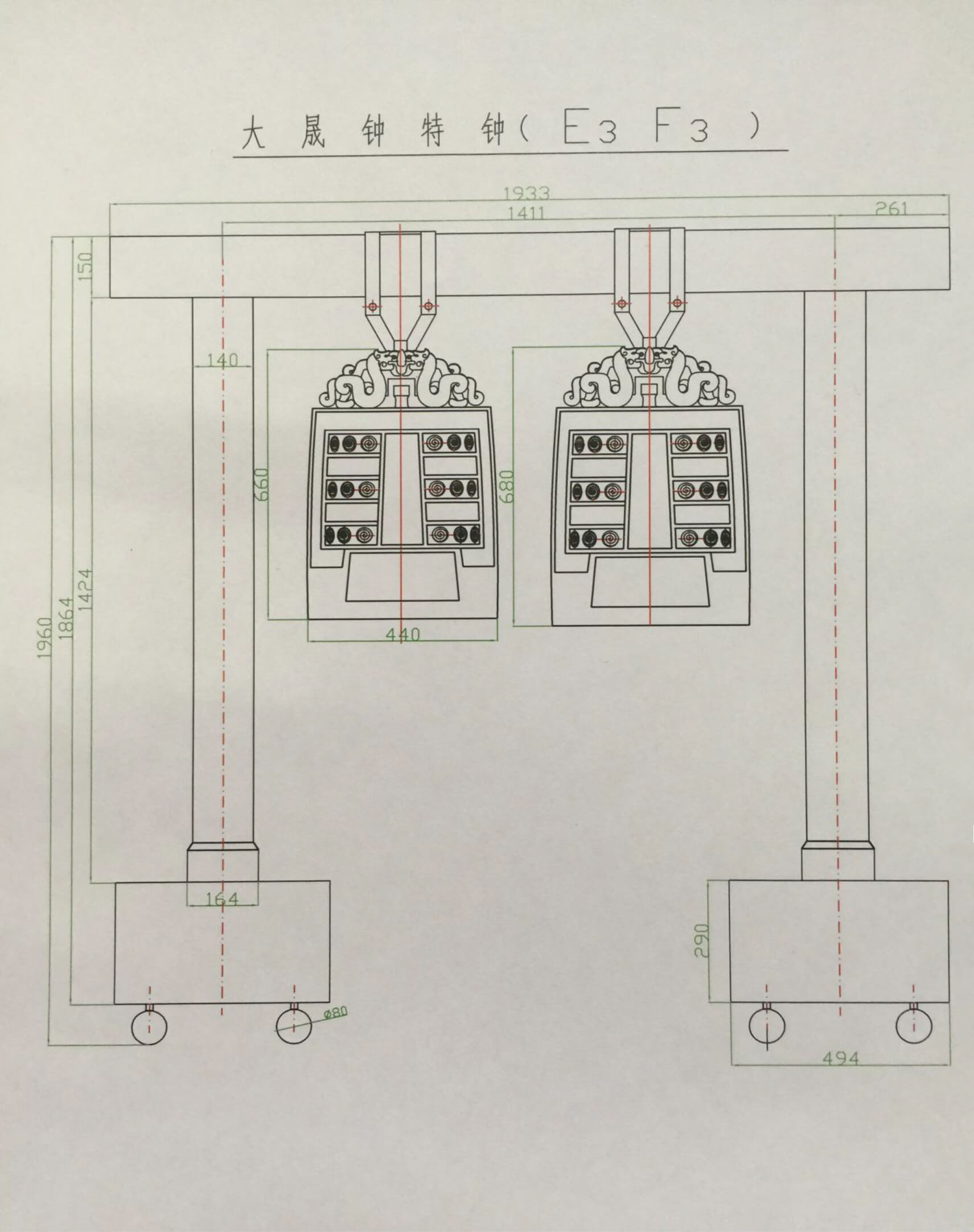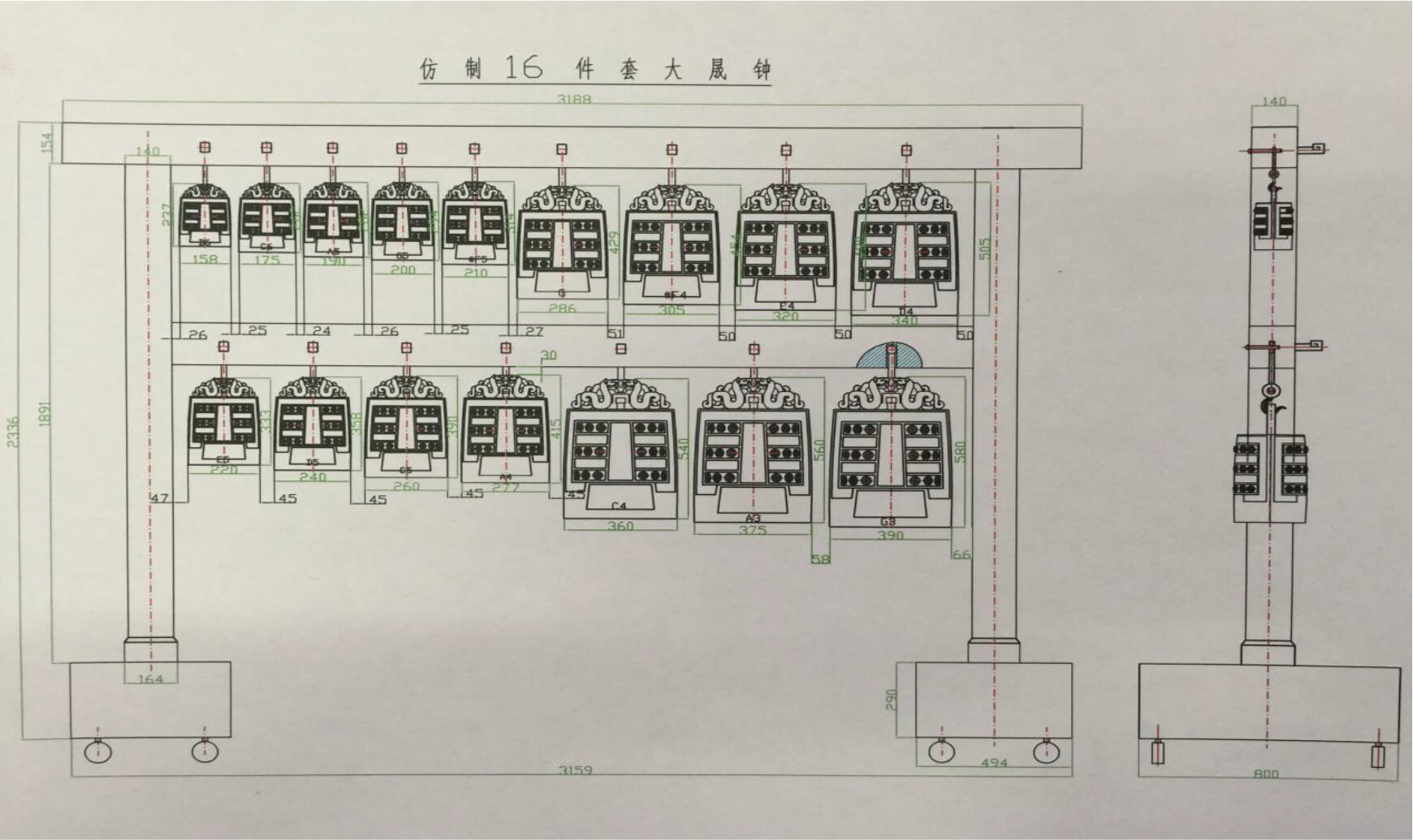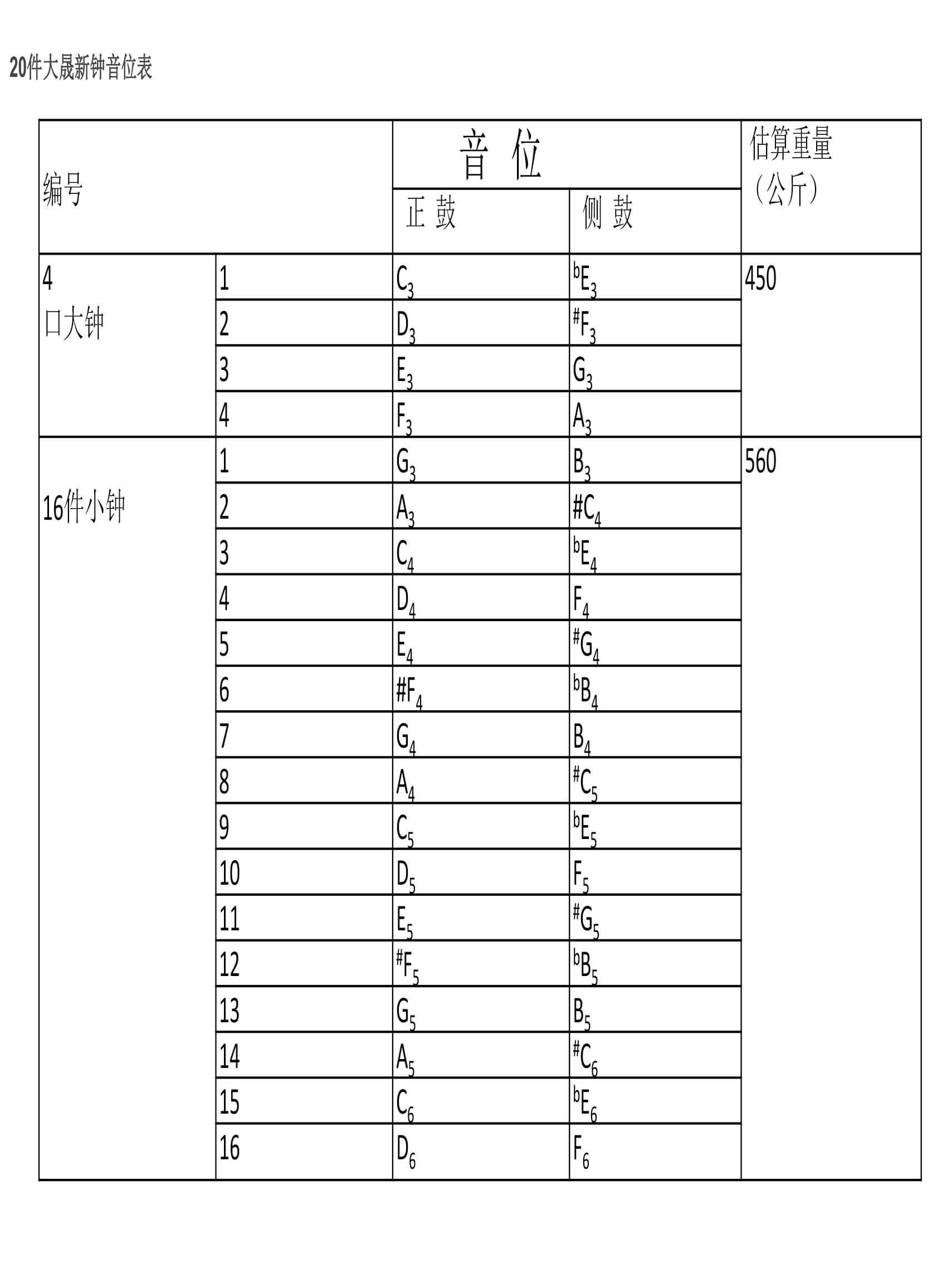Inaugural Golden Bells International Composition Contest
for Chinese Instruments with Western Orchestra首届金编钟国际作曲大奖赛
征求供中国民乐器与西洋管弦乐队合奏的新创作品Dasheng Bells Layout – 大晟新钟布置图

Each bell is capable of producing two tones, indicated above by beaming. The lower (primary) pitch is produced by playing the bell “straight on,” near its bottom rim. The upper (secondary) tone is produced by striking at a position roughly 45° to the right or left, with the spot of clearest pitch a little variable by bell size. In performance, the alternate pitch is often also audibly present in the beautifully complex tone.
Typically one player is assigned to each bass rack, responsible for two bells. The other two players then perform in the main rack, often, but not necessarily dividing pitches as suggested by the bar line.
Here is the full gamut of the bells, stems down for primary, stems up for secondary pitches.
每一口钟都能够产生两个音高,如上图中符杆相连的两个音符所示。 较低的音(主音)是通过“直接敲击“钟体底部边缘来产生的。 较高的音(次音)则是通过敲击钟体左侧或右侧约 45 度处产生的,其最佳位置因钟的大小而略有变化。 演奏时,无论演奏主音或次音其相应的次音或主音也经常会同时出现,形成繁富美妙的音响。
通常,每个低音钟架配置一名演奏员,负责演奏两口钟。 而其他两名演奏员则负责演奏主钟架上的钟,通常但并非必须按小节线提示的那样区分其演奏的音域。
这里标识的是大晟新钟的所有音符,符杆向下的是主音,符杆向上的是次音。





Register for email updates
To receive updates from this site, please complete and submit this form:
请填写并提交此表格以接收更新的内容
